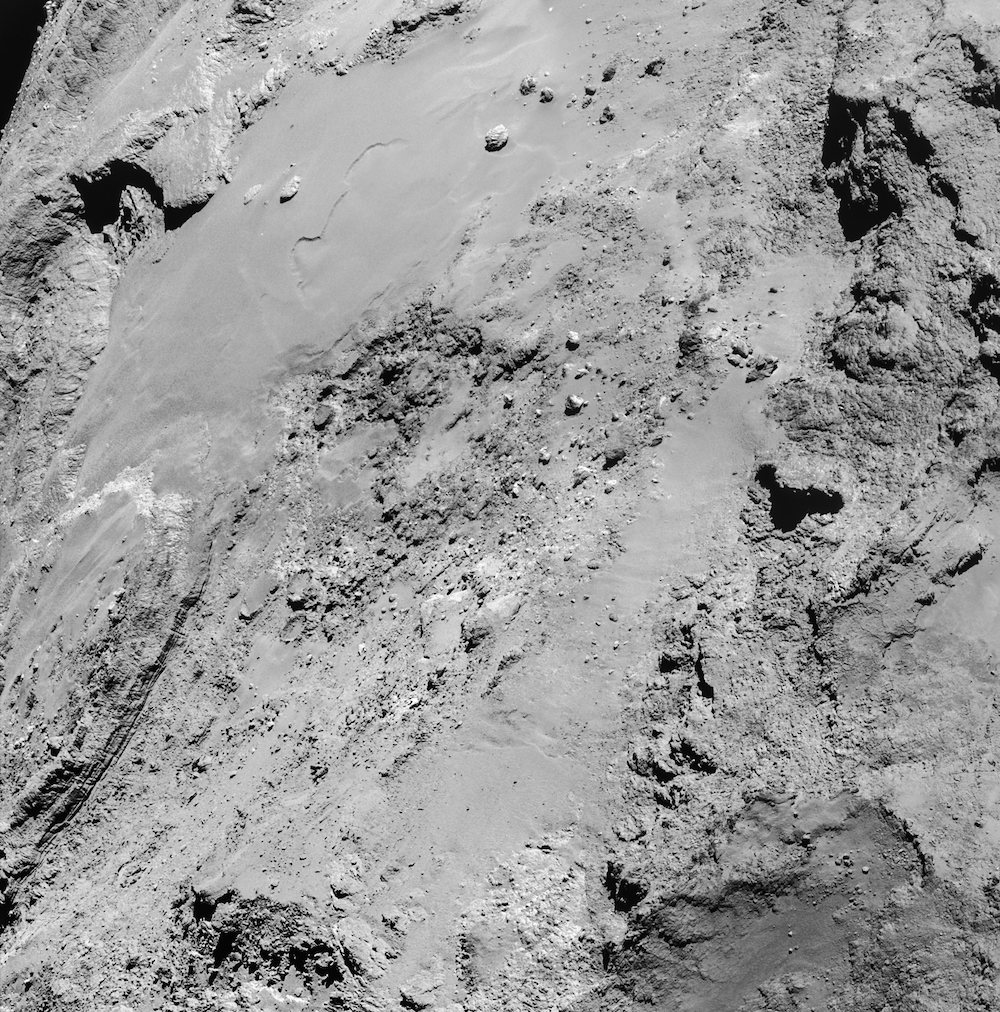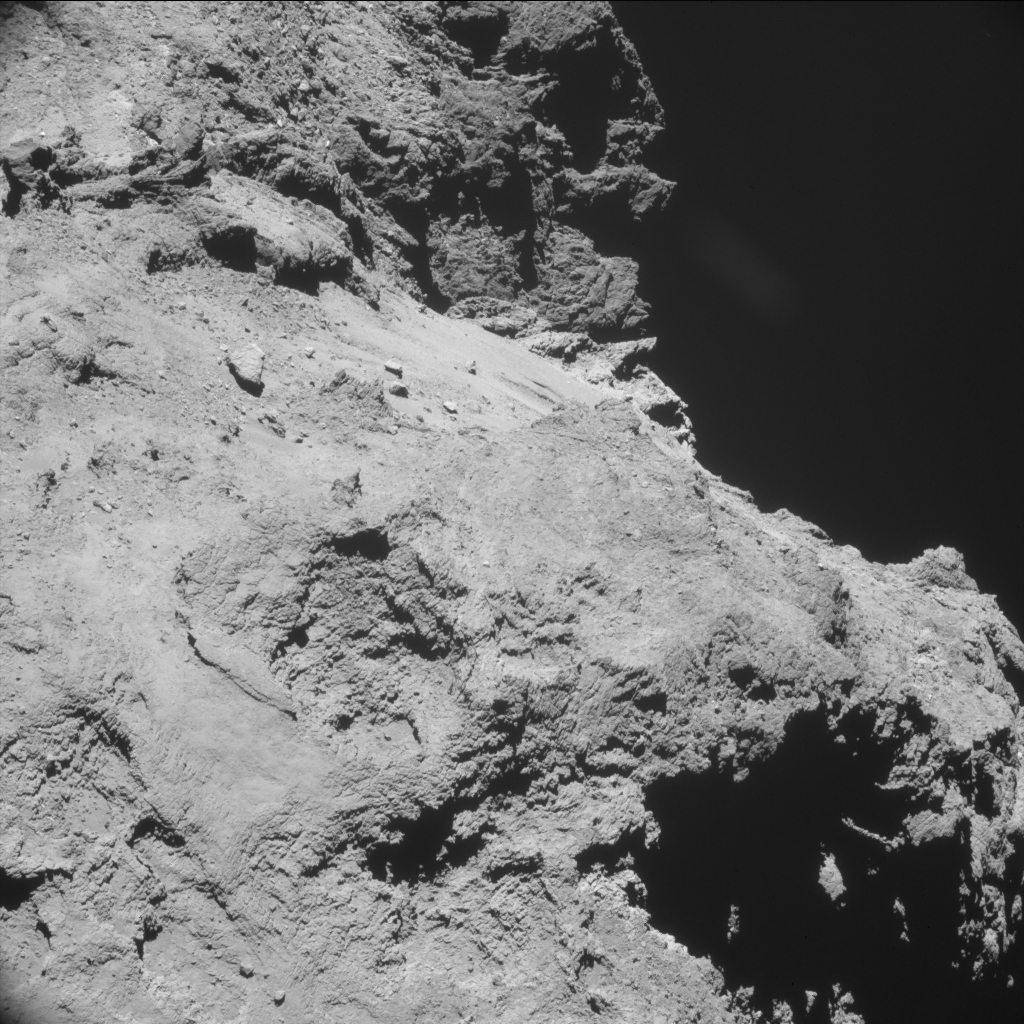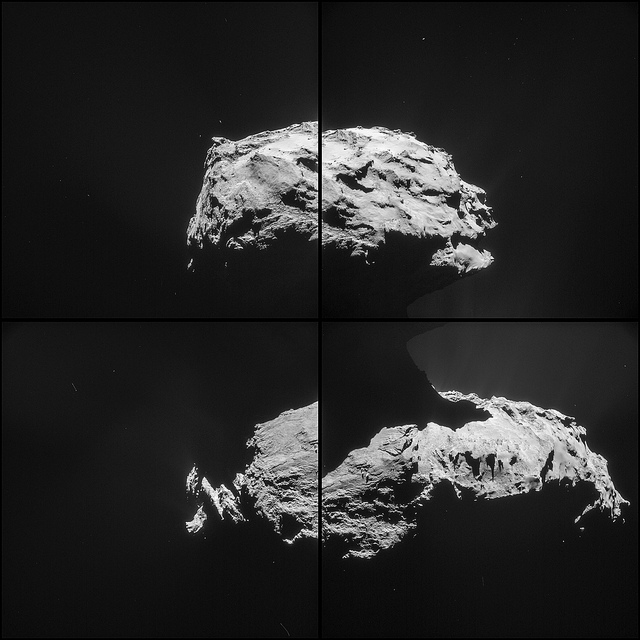Europe’s Rosetta spacecraft — six months into its research mission at comet 67P/Churyumov-Gerasimenko — made its closest flyby of the comet’s boulder-strewn nucleus Saturday, capturing new photos and measurements to help scientists unravel how the duck-shaped body is evolving on its orbit around the Sun.
Rosetta flew just six kilometres — about 3.7 miles — from the comet’s surface on Saturday. Scientists will be analyzing the full results of the encounter for months, but the European Space Agency released the first imagery from the close-up Monday.
The images come from Rosetta’s navigation camera, which ground controllers use to help navigate the solar-powered probe around the vicinity of the comet. Photos from Rosetta’s OSIRIS science camera should be released about two weeks after the flyby.



Follow Stephen Clark on Twitter: @StephenClark1.



